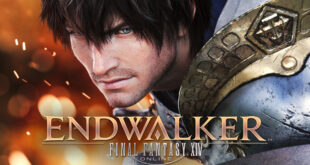Ed Fear visits Frontier Developments to find out more about how those LostWinds came to blow again…
If you had asked people two years ago what they thought the star of the WiiWare launch line-up would be – or, more pertinently, who would be behind it – not many would have plumped for Frontier Developments and its LostWinds game.
It was the Cambridge-based group that, alongside Square Enix, provided real weight to the line-up. Both brands managed to prove on day one that the service wasn’t just going to be home to lightweight experiences but for proper, retail-quality games. Internet forums and blogs lit up with praise for the innovative platformer, which used the Wiimote to mimic wind-based powers to help a boy explore the world. It even picked up a Develop Award last year, beating Heavenly Sword, Crysis and Overlord to win the Best New IP category.
Those enamoured with LostWinds might have expected that with the short, digitally-distributed nature of the game, the sequel – mentioned on the Frontier website before the first game was even released, but not officially announced until last month – may have not been too long coming.
GAME LAUNCH
As the team readies for the launch of the sequel, LostWinds: Winter of the Melodias, it’s perilously close to 18 months since the first episode was released. With radio silence surrounding the game until as late as last month, and the still uncertain penetration rate of the WiiWare platform among the userbase at large, some had assumed that the sequel might be going for a bigger-scale, perhaps even retail, release.
Not so, but then the game hasn’t really been in development all that long – in fact, the team wasn’t properly together until April of this year.
“We haven’t been working on this full-time in the interim,” explains David Walsh, Frontier’s managing director. “We had other commitments that we had to deal with first, but we’ve been thinking about what we could do ever since we finished the first game.”
Other commitments? “Well, another way of thinking of it is that to be a developer these days you really have to plan very well,” interjects David Braben, founder of Frontier. “We can’t presume everything is going to be a success. That doesn’t mean we didn’t believe in it – quite the opposite – but you can’t assume these things.
“It really is more a planning thing than anything. On the one hand, it would have been great to roll straight over and do a sequel, but then it’s very easy to fall into the trap of becoming a production machine. It’s not clear either way.”
“The other benefit,” says Braben, “is that it helps not only keep things fresh in terms of the game, but also the experience for the team themselves. I don’t want to imply that LostWinds is some kind of hobby, but there’s a parallel – when you do something as a hobby it’s the contrast to what you do the rest of the time that makes it really different and refreshing. It has given us the chance to have that freedom to experiment and do ‘playful’ stuff, and that’s really exciting for us.”
Nevertheless, Walsh is clear that, if they can avoid it, ‘other commitments’ won’t be splitting the group up again for the foreseeable future: “I think it’s safe to say that the team will be kept together going forward,” he asserts.
DIGITAL DISTRIBUTION
Clearly, we put forward, the fact that the sequel is also coming to WiiWare means that the platform served Frontier well enough. “It worked very well for us,” says Braben. “It was a good experience all round, and it was nice to be there at the start of the service. We have an interesting challenge now, given that it is a much noisier market. We are really excited about it, and we have a lot of love for it in-house too. So we are very hopeful that it can shout loud enoh to be heard.
“It’s very interesting how the emphasis is gradually changing to digital downloads. I mean, look at what Microsoft is doing by splitting Fable 2 into downloadable chunks. It’s interesting, from a psychological point of view, seeing how subtly the centre of gravity changes slowly month-on-month,
year-on-year.”
But the move to digital distribution and self-publishing has forced Frontier to become more mature in the way it approaches development, Walsh interjects: “I don’t think we’ve ever doubted the input of the publisher-type functions. The question was whether we could do that ourselves, and I think we’ve maintained the discipline to get things done when we say they’re going to be done, and to take a step back and be critical of ourselves.”
Nevertheless, the company remains a strong supporter of the digital download space. It hasn’t yet produced any products for Xbox Live Arcade and PSN, but that might be down to the firm’s strong belief that these smaller games shouldn’t be given any less effort than a full retail project – and that they should be undertaken not to make a quick buck, but to experiment with fresh concepts.
“We’ve seen some nice things coming through on the three digital download platforms, and we think that’s a positive thing, and we want to back that as much as we can,” says Braben.
“But one of the things that really annoys me is when people see XBLA, PSN and WiiWare as a dumping ground, in terms of ‘you don’t need to put the same amount of effort in’. Actually, it’s quite the opposite. It’s like how novelists approach short stories. It’s a way to try out a radical idea, and quite often a lot of those do become novels later on. What I don’t like is the idea that people can scratch one out at the bus stop, which I’ve overheard at conferences.”
There’s little doubting that dedication. Few who have played LostWinds – and, indeed, few of those that will go on to play the sequel – would say that the game has any less polish or ambition than most companies put into traditional retail product. A team of under 20 that can complete a game of this quality in just over six months and feel like they’re creatively empowered in the process, paints a rosy future for the increasing numbers of disillusioned cogs whirring away in gargantuan machines across the world. That they can do this and still come away with an award-winning series, is testament to this team in particular.
That Difficult Second Game
of course, frontier are more interested in talking about the game rather than what’s brought them to it. LostWinds: Winter of the Melodias picks up almost straight after its predecessor. When the diary of protagonist Toku’s missing mother is found, the only reference to her whereabouts points to the city of Melodia, high up on the mountains, where Toku must travel to in search of her whereabouts. On the way, though, he comes across Summer Falls – an idyllic setting mysteriously locked in an eternal winter.
It’s here that the new mechanic for the sequel comes into play: the ability to switch seasons. “As we were finishing up LostWinds we were thinking of things we could do for the next game, and someone came up with the idea of creating snowballs using the vortex ability,” explains lead designer Steve Burgess. “So we took one of our old levels and made a winter version of it, and it looked great, so we thought we could do winter as our big visual difference. But then we realised we could do both – keep the visual style of the last game through the summer levels, but then make them play completely differently in winter.”
Such a design progression is quite common for the series, Burgess says – after all, the original concept emerged as part of Frontier’s ‘Game of the Week’ idea-athon, where it was ripped apart by various staff members until they knew it could stand on its own. “Each day, someone sees something and goes ‘Ah, wouldn’t this be cool,’ and then we’ll try and work it in,” Burgess laughs. “A lot of the design has been very natural, very organic.”
The season-switching ability both significantly expands the effects of the last game’s power set, and opens up possibilities for some truly ingenious puzzles (some of the solutions we’re shown are so simultaneously imaginitive and intuitive that we actually laugh, cynical and world-weary that we are).
When visiting Frontier, Develop was treated to a full run-down of the storyline – which we’ve curtailed here to avoid spoiling anything – and it is genuinely surprising how thickly the plot is layered. “It’s definitely a lot more involved than the story in the original,” confirms Burgess. “There are lots of threads that all work together. Each of the characters have their own motivations within the bigger arc of the game’s story, and these threads cross over at points. We’ve overthought a lot of it, really – we’ve come up with the backstories and reasons behind all of these things, and a lot of it won’t be seen.”
The team has also listened to the criticisms levelled at the original game: firstly that it was too short, and secondly that it could at times be difficult to work out what to do next.
Braben confirms that, in addition to focusing on making the environments much bigger this time around – wonderfully demonstrated by a particular set-piece weaved into the game’s opening section – there are also more areas than in the original. They’re all linked via a map, which gives not only a spatial context to the discrete areas, but also gives players a rough idea of where they should be going without taking the exploration out of it.

 MCV/DEVELOP News, events, research and jobs from the games industry
MCV/DEVELOP News, events, research and jobs from the games industry



